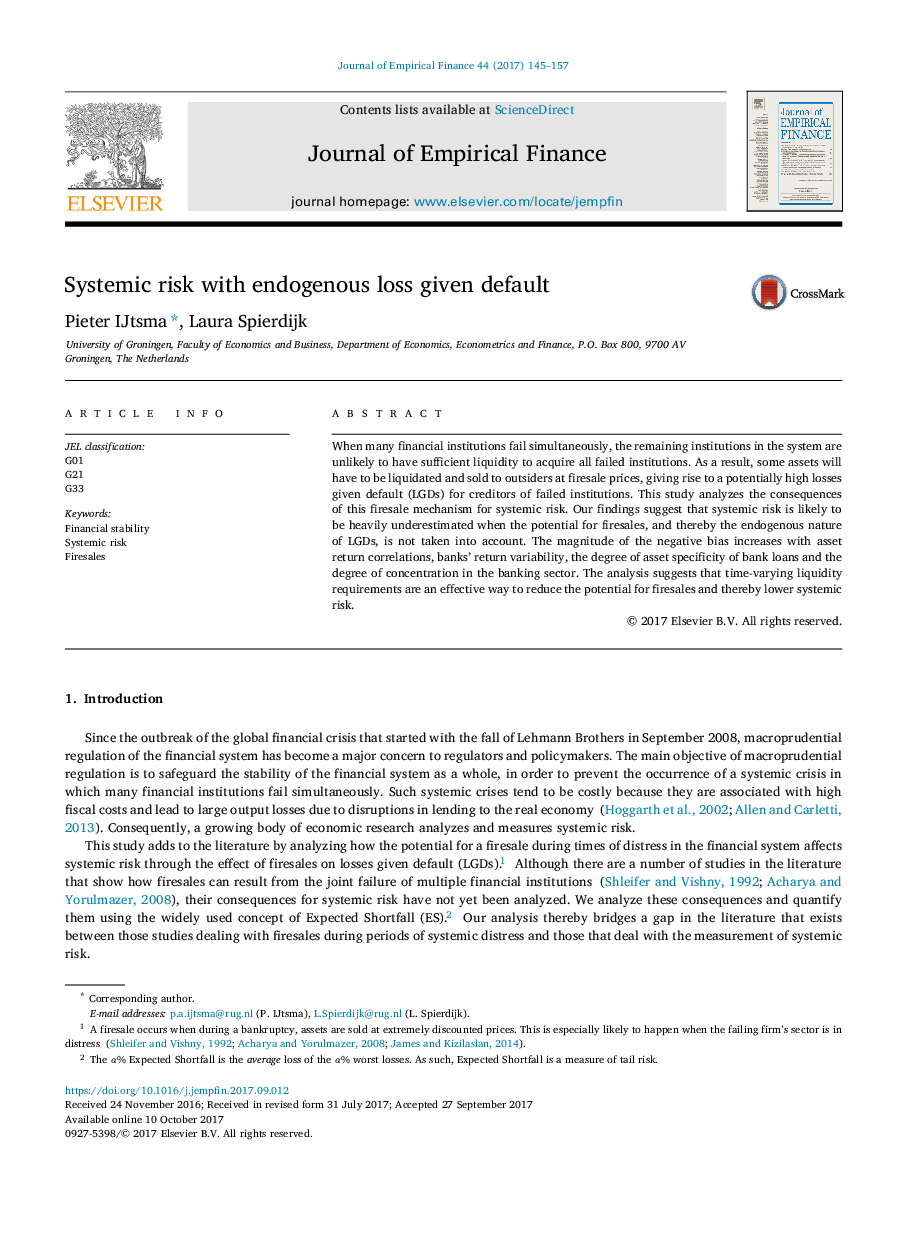| Article ID | Journal | Published Year | Pages | File Type |
|---|---|---|---|---|
| 5100254 | Journal of Empirical Finance | 2017 | 13 Pages |
Abstract
When many financial institutions fail simultaneously, the remaining institutions in the system are unlikely to have sufficient liquidity to acquire all failed institutions. As a result, some assets will have to be liquidated and sold to outsiders at firesale prices, giving rise to a potentially high losses given default (LGDs) for creditors of failed institutions. This study analyzes the consequences of this firesale mechanism for systemic risk. Our findings suggest that systemic risk is likely to be heavily underestimated when the potential for firesales, and thereby the endogenous nature of LGDs, is not taken into account. The magnitude of the negative bias increases with asset return correlations, banks' return variability, the degree of asset specificity of bank loans and the degree of concentration in the banking sector. The analysis suggests that time-varying liquidity requirements are an effective way to reduce the potential for firesales and thereby lower systemic risk.
Related Topics
Social Sciences and Humanities
Economics, Econometrics and Finance
Economics and Econometrics
Authors
Pieter IJtsma, Laura Spierdijk,
